Oxfordshire Mind’s Physical Activity Team are offering a weekly ‘virtual walk’, this week the team are visiting the magnificent mausoleum that is the Taj Mahal.
If money were no object, what would you do to show you cared about someone else? What if you were an emperor in 17th-century India, with the wealth of half a subcontinent at your disposal? When Mumtaz Mahal, the beloved wife of the Mughal Emperor Shah Jahan, died, he built her a tomb of such stunning beauty and magnificence that it became one of the wonders of the world. I am talking, of course, about the Taj Mahal. It is this magnificent mausoleum that we are visiting today, hoping to see if the reality measures up to the legends.
Cars aren’t allowed within 500 metres of the Taj Mahal to prevent the monument being damaged by pollution. So to get to the gate of the complex, you either have to walk or find alternative means of transport. We hop into a rickshaw, and the driver speeds off at a surprisingly fast pace, though still one that allows us to take a leisurely look at our surroundings as we pass. Actually, it’s good to arrive at this in a slightly old-fashioned way. It feels like we’re slipping back in time, somehow. We are visiting at sunrise, the best time to see the monument before the heat of the day kicks in, and the first flush of dawn is just starting to appear behind the rooftops. A couple of monkeys run alongside us for a while. They look at us curiously, as if trying to judge whether we have food to give them, before dropping away again when they realise we don’t.
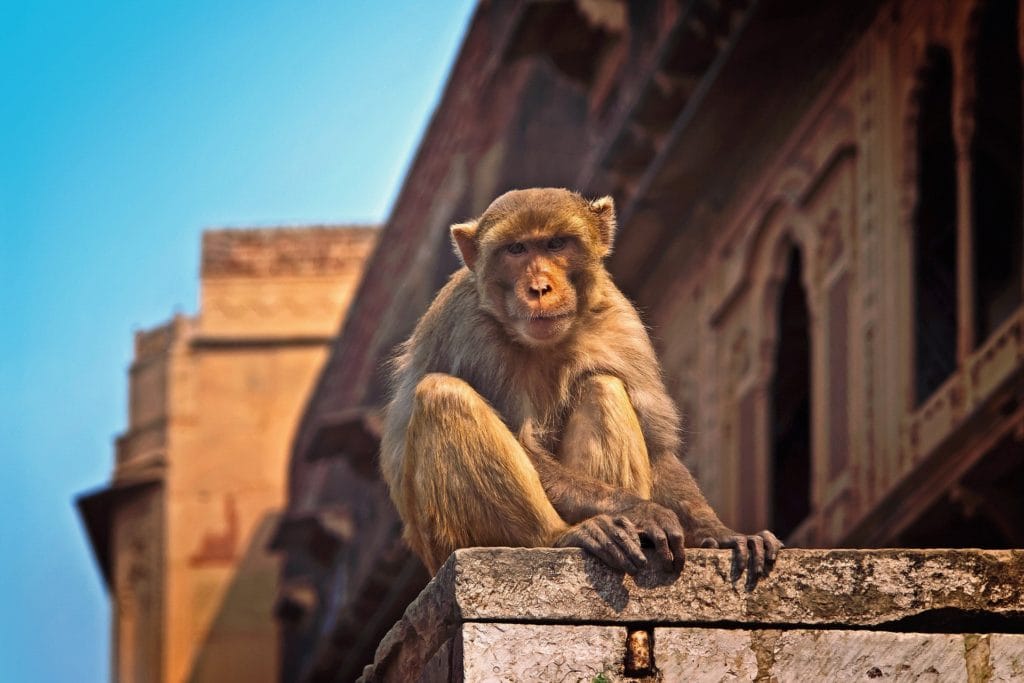
Finally the rickshaw driver drops us off at the ticket office, and we pay and go in. The first sight you see when you enter the complex is the huge main gate. In contrast to the white marble of the mausoleum, the gate is red sandstone bordered with white. It is decorated with calligraphy which reads “O Soul, thou art at rest. Return to the Lord at peace with Him, and He at peace with you.” We pass through the gate- which is almost the length of a tunnel, before coming out into our first view of the Taj Mahal.
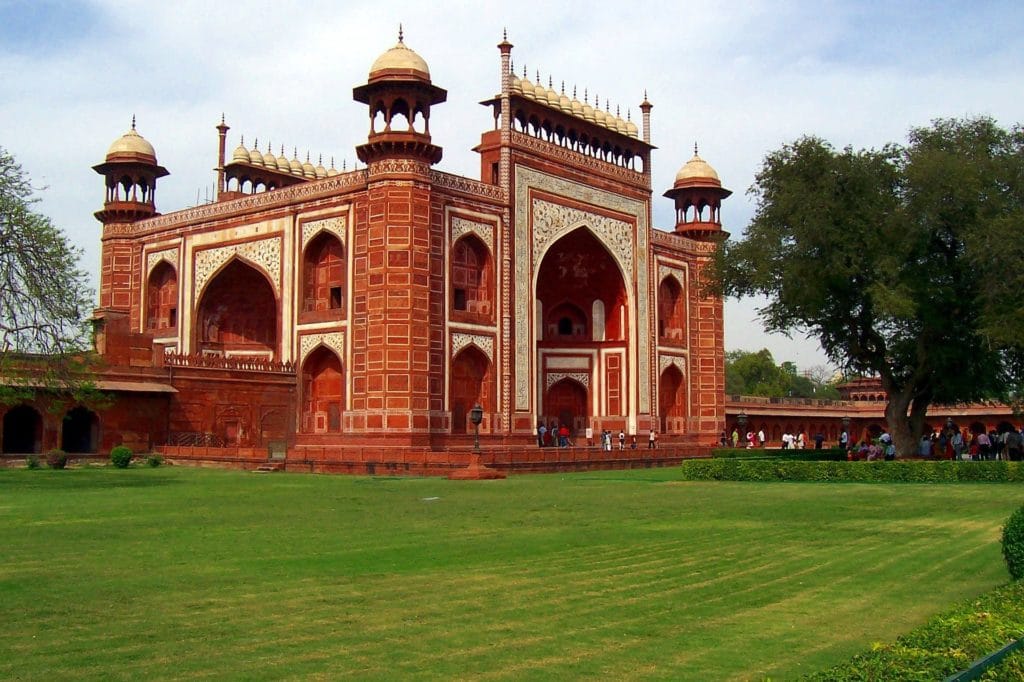
The Taj Mahal sits at the end of a long garden, with a pool running down the middle and two long walkways on either side. It’s dotted along its length with immaculately trimmed trees. The overwhelming impression is one of symmetry and balance- each object has its perfect mirror. The Taj Mahal itself is reflected in the polished surface of the pool, a perfect double of the white marble vision in front of us.
Everyone knows what the Taj Mahal looks like, but it’s different when you see it in person, somehow. The huge onion-shaped dome- a glistening curved shape like an earthbound moon, or, if you’re feeling particularly fanciful, a giant teardrop- perches on top a series of stacked archways. It’s complex and yet somehow beautifully compact, like a finely worked jewel box. Four minarets stand at a slight remove from the main building, as if wanting to show the body of the dead empress the proper respect.
“The white marble takes on different colours depending on the time of day… Now, at sunrise, it’s lit with a soft pink flush, as if a candle flame were softly flickering within the dome.”
The white marble takes on different colours depending on the time of day. At sunset it is set aflame by orange and yellow. At midday the building blazes bright white, throwing back the sunlight almost blindingly into the eye of the beholder. At night it seems practically translucent, the moonlight shining through it and lighting it with a cool, silvery glow. Now, at sunrise, it’s lit with a soft pink flush, as if a candle flame were softly flickering within the dome it.
You might be tempted to stop and take all the photos you possibly can, but hold your horses for a moment. Everyone stops here, but there are some even better views further on, and ones that aren’t going to be quite as crowded.
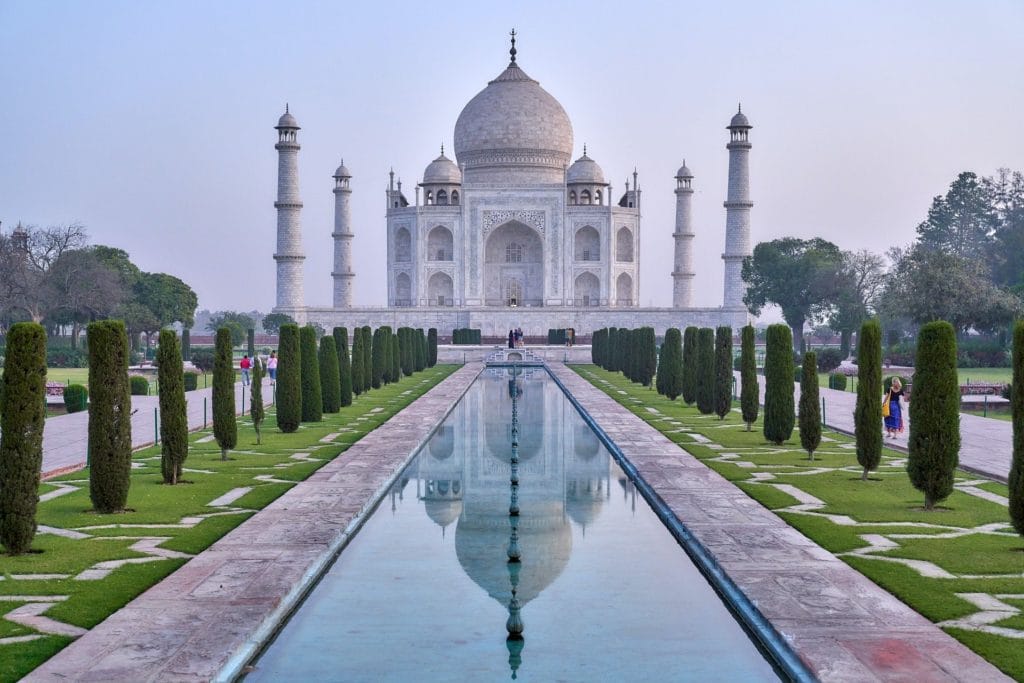
We walk through the garden, which was designed to represent a kind of paradise on earth. Once upon a time it would have been overflowing with roses, daffodils and fruit trees, but even though the layout has been simplified a bit now, it is still a glorious walk. A waft of jasmine comes to us on the breeze as we stroll down the walkway, and a bright green parakeet flies above our heads.
Finally we stop at the reflecting pool halfway between the gate and the entrance. In front of this is the famous bench where many pictures of celebrities visiting the Taj Mahal were taken. It’s also a great spot for us to stop and take our own photos. Many people have the same idea; families who have press-ganged a passerby into taking their portrait; couples taking selfies, holding the camera out in front of their face, their arms around each other, smiling broadly. Everybody looks so delighted to be here. Lots of people even seem to have dressed up for the occasion, seemingly to make sure the photos from this once in a lifetime trip are as perfect as they can possibly be.
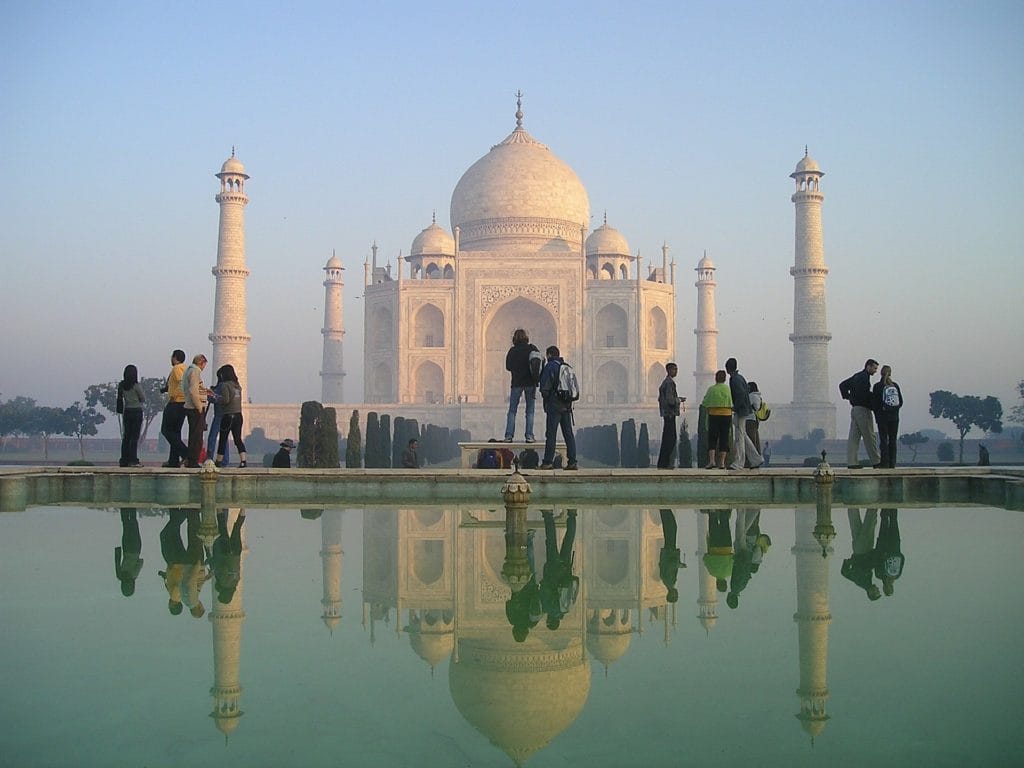
Now we approach the Taj Mahal itself. Close to, you can see that the marble is not in fact uniformly white, but is inlaid with colourful stones arranged in beautiful geometric patterns. Over 28 different types of precious and semi-precious stones were used, sourced from all over India and beyond. The marble came from Rajasthan, the jasper from Punjab, jade from China, turquoise from Tibet, lapis lazuli from Afghanistan, sapphire from Sri Lanka and carnelian from Arabia. It is said that over a thousand elephants were used to transport the building materials for the Taj Mahal, and over 22,000 people were involved in its construction.
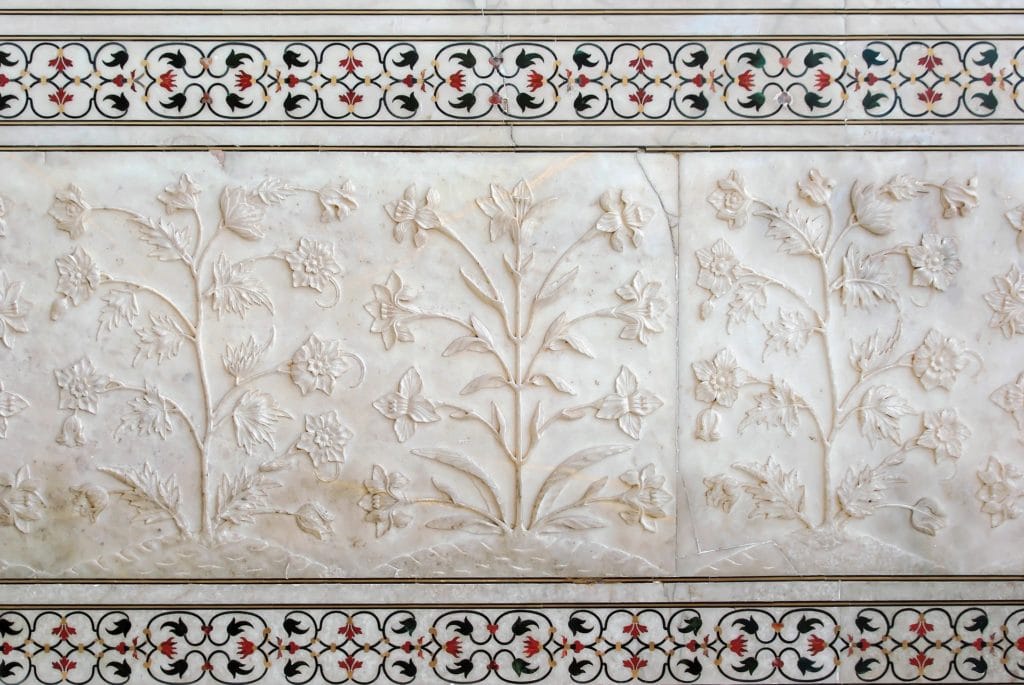
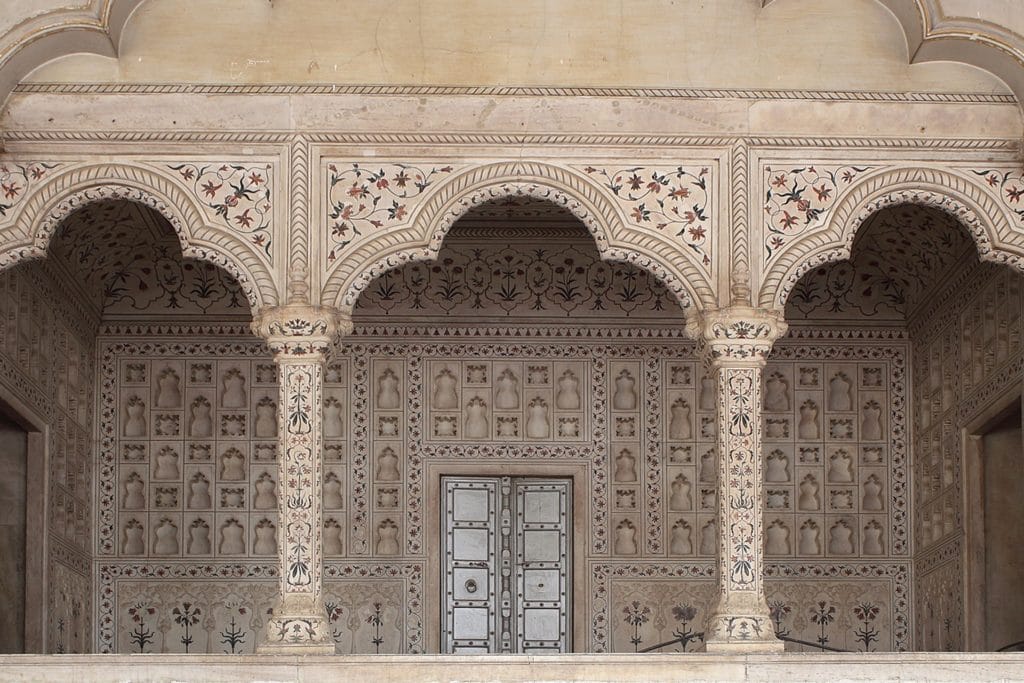
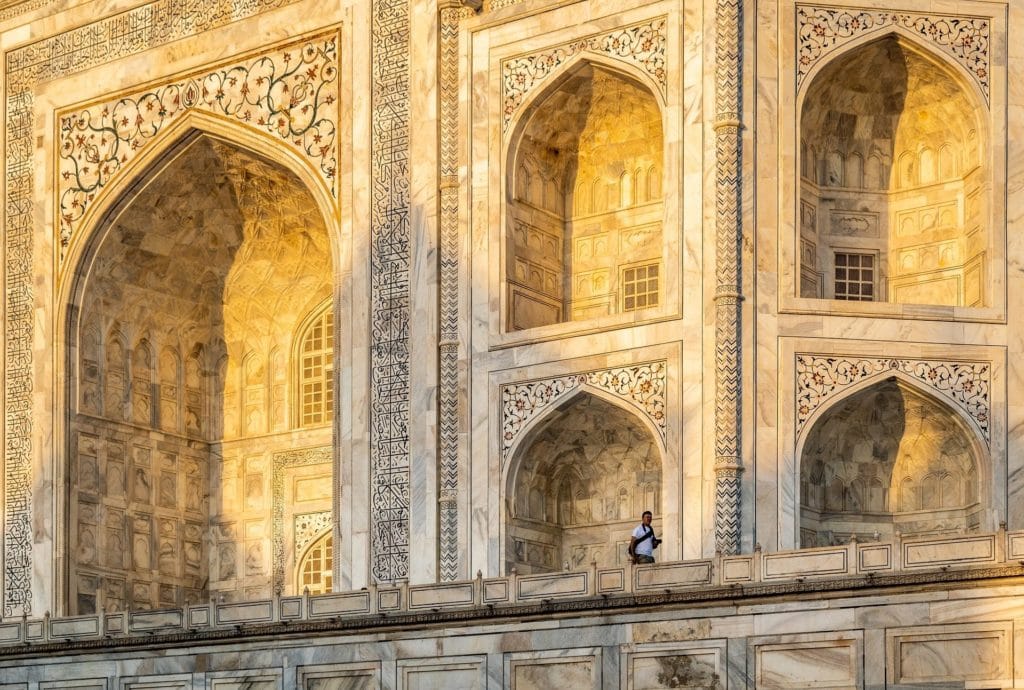
We step inside, into the silence and stillness of the tomb. There, behind a marble screen, lie the cenotaphs of Mumtaz Mahal and Shah Jahan, side by side. We stop a moment to pay our respects before stepping once more out into the bright morning sunlight.
This seems like a good point to end our walk. Feel free to stroll around the gardens some more and experiment with taking pictures of the Taj Mahal from all different angles. See you next week for another walk!


